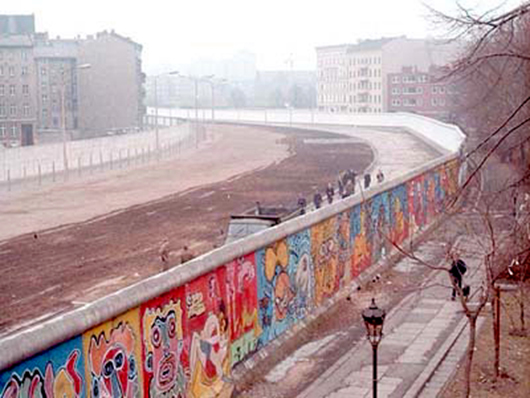
BERLIN (AFP) – Giant portraits of the world’s tensest borders went on display Tuesday on the longest remaining stretch of the Berlin Wall, in what organizers called a protest underlining the futility of barriers to resolve conflict.
The Wall on Wall project by German photographer Kai Wiedenhoefer features 36 panoramas taken in Northern Ireland, Iraq, Cyprus, the West Bank, Morocco, North and South Korea and the border between the US and Mexico.
The color prints have been glued along 364 meters of the Berlin Wall, which divided the German city for 28 years until it was toppled in a bloodless revolution in 1989.
Wiedenhoefer, 47, captured the images on more than 20 trips between 2003 and 2012 and said he fought with Berlin authorities for five years until winning permission for the open-air display.
The venue is the flip side of the so-called East Side Gallery, a mural-covered expanse of the Wall that draws hordes of tourists eager to get a sense of what the divided city looked like.
Wiedenhoefer, who crowdfunded the project, has won several international prizes for his work in the Middle East and closely followed the construction of Israel’s West Bank security fence.
However his comparisons to the Berlin Wall, which made East Germans prisoners of their own country, has drawn criticism in Israel, which views the concrete barrier as crucial to stopping militant attacks.
“It’s always a problem – in November I hung a portrait of the US wall in Mexico here and an American came by and shouted at me, ‘You can’t compare this.’ But for me, it doesn’t matter if it’s a religious, national or economic conflict – the idea that you have a problem and you can solve it by building a wall has simply been obsolete since 1989.”
Wiedenhoefer said the bleak, often heavily militarized ramparts against illegal immigration, like the US fence on the Mexican border or along religious lines such as in Baghdad and Belfast, were tragic testaments.
# # #
ADDITIONAL IMAGE OF NOTE



